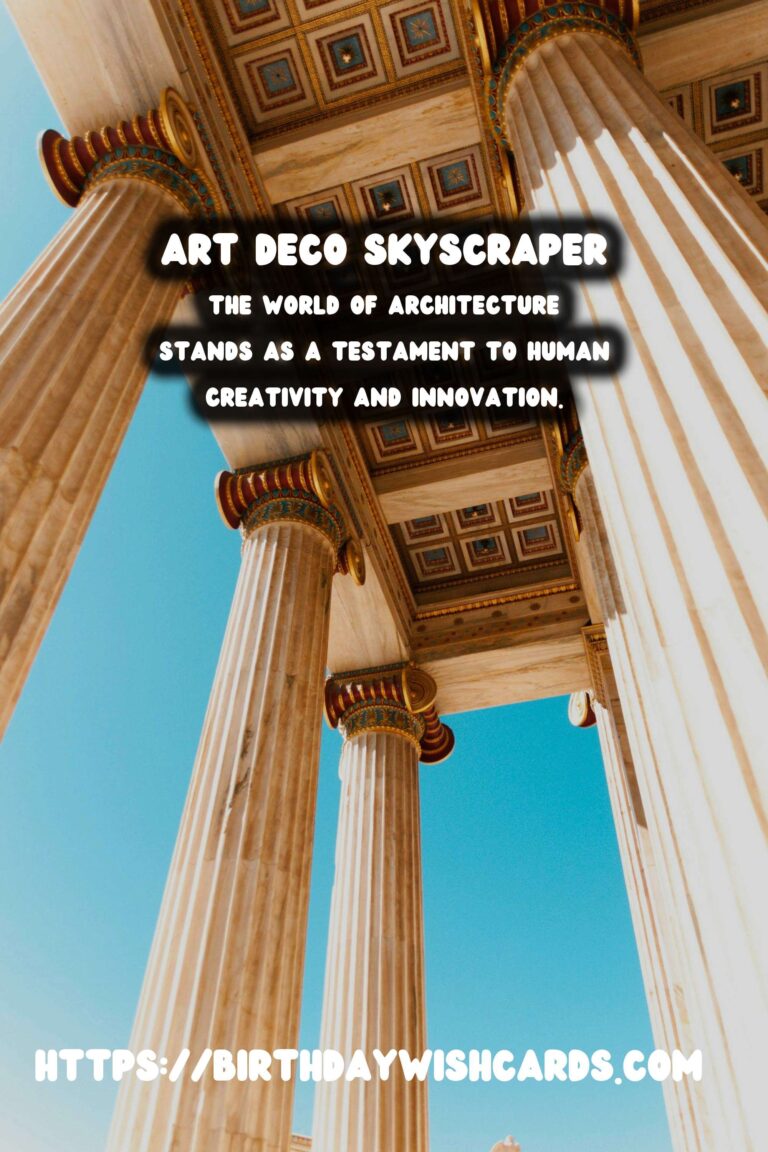
The world of architecture stands as a testament to human creativity and innovation. One of the most significant landmarks in this world is the skyscraper, which has shaped urban landscapes across the globe. This article delves into the rich architectural history of skyscrapers, focusing particularly on the Art Deco style and its evolution into modernist designs.
The Rise of Skyscrapers
During the late 19th and early 20th centuries, the United States experienced rapid industrial growth, leading to an increased demand for office spaces and residential units in urban areas. This demand fostered the construction of tall buildings, with advances in steel engineering and elevator technology enabling architects to reach for the skies. Skyscrapers became symbols of economic power and architectural prowess.
Art Deco Era: A New Aesthetic
Emerging in the 1920s and 1930s, the Art Deco style revolutionized skyscraper design. It was characterized by its lavish use of geometric shapes, vibrant colors, and ornate detailing. This movement was heavily influenced by the modernization of technology, which was evident in the streamlined forms and symmetrical patterns of Art Deco structures.
One of the most iconic examples of Art Deco architecture is the Chrysler Building in New York City. Completed in 1930, its distinctive terraced crown and facade adorned with automotive-themed ornamentation reflect the peak of Art Deco’s popularity. These towers not only accentuated the skyline but also aligned with the era’s fascination with futurism and luxury.
Post-War Transition to Modernism
After World War II, architectural tastes began to shift from the decorative intricacies of Art Deco to the clean lines and minimalist aesthetics of Modernism. This shift was partly due to economic constraints in the post-war period and a broader cultural move towards simplicity and functionality.
Modernist skyscrapers emphasize the use of new materials like concrete and glass, focusing on structural integrity and the building’s functionality rather than ornate decoration. The Seagram Building in New York, designed by Ludwig Mies van der Rohe, exemplifies the International Style, with its simple, clear-line silhouette reflecting an embrace of modern engineering.
Impact and Legacy
Both Art Deco and Modernism have left indelible marks on the architectural landscape. Art Deco’s emphasis on aesthetics and decoration paved the way for the exploration of new forms, while Modernism’s focus on function and minimalism has influenced contemporary building designs. The synthesis of these styles often informs today’s architectural projects, where there is a constant dialogue between form and function.
Today’s architects continue to draw inspiration from these two pivotal styles, balancing artistic expression with innovation. Contemporary skyscrapers now incorporate cutting-edge technology to promote sustainability, echoing the forward-thinking mindset that has always driven skyscraper architecture.
Conclusion
The architectural history of skyscrapers originally rooted in the Art Deco era flows seamlessly into the modernist movement, each contributing unique elements that have shaped our cities. As we move further into the 21st century, the fusion of these styles with new technological advancements ensures that the skyscrapers of tomorrow will continue to awe and inspire.
The world of architecture stands as a testament to human creativity and innovation. This article delves into the rich architectural history of skyscrapers, focusing particularly on the Art Deco style and its evolution into modernist designs.
#Architecture #Skyscrapers

